With slowly but surely more and more boats hitting the water and the new sailing season 2023 shortly to begin, many of you dearest readers may have decided over the winter time to buy a Gennaker. Gennakers, asymmetric Spinnakers, are perfect for sailing roughly 80 to 160 degrees TWA in lighter wind conditions. Besides their enormous power and capability to drive the boat at high speeds at relatively low wind speeds, these sails are a hell lot of fun!
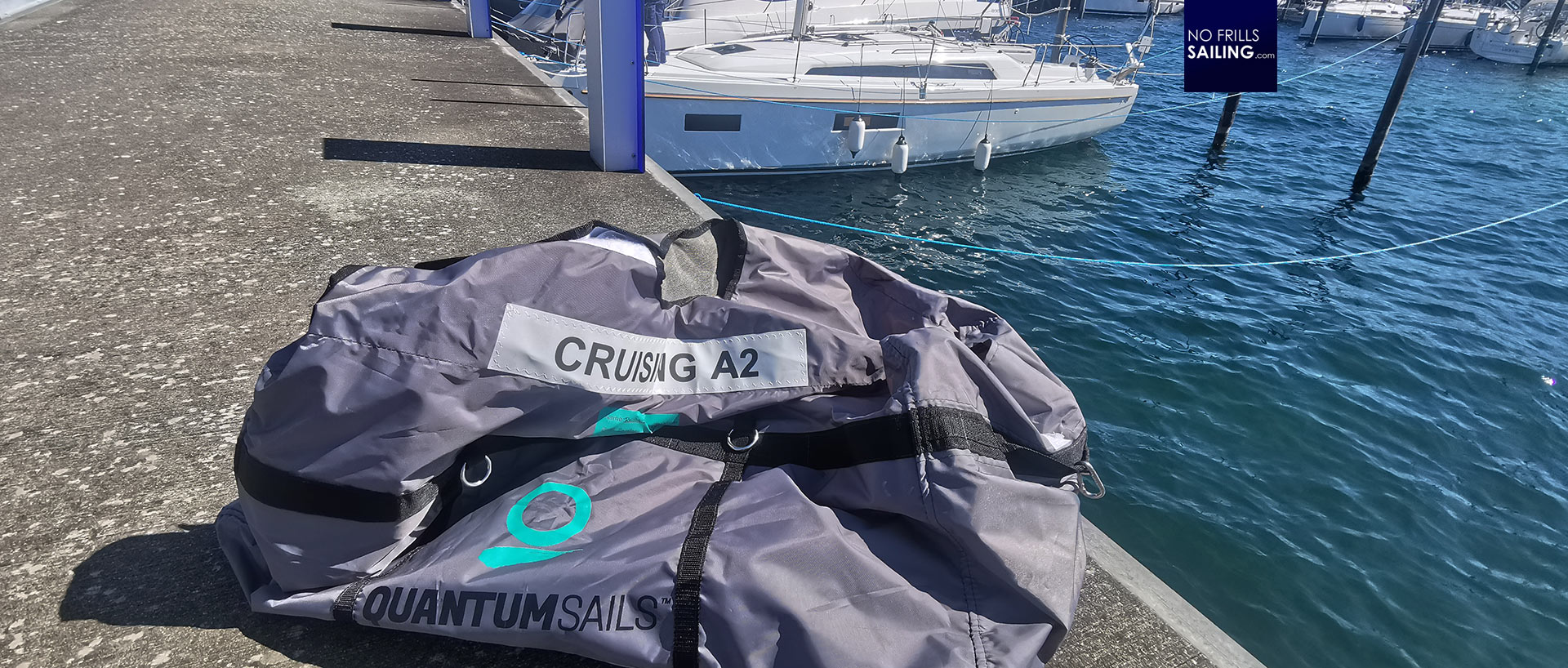
Just returning from another delivery and commissioning trip to the Lake of Constance, I brought this article which is aimed at sailing newbies who have just been buying a Gennaker and never set up such a big sail. Just like my “How to set up a Code 0 light wind sail”-article. I want to take away a bit the awe you might feel seeing this huge sail and the complexity of it. It´s really easy and fun!
Don´t be afraid of the big Gennaker sail!
First of all: Don´t be afraid of a Gennaker. In my job as a salesman for sailing yachts I regularly meet people who somehow have the impression that Spinnakers and their derivates are “dangerous” or complicated to sail. Some even think that as newcomers on boats they somehow aren´t competent or trained enough to fly such canvas. This is a myth: When I tried out my Gennaker on GEKKO the first time I took heed of some simple – but absolutely matter of course – things and it turned out to be a great fun day.

Of course, if your sailmaker offers to deliver your new sail to your boat, you should take the offer and pay a little extra. You will not only get a nice training how to set up the sail, hoist and fly it and retrieve it safely but you may as well get a sailing lesson is how and when to use it and how to trim it properly. Remember: Gennakers are light wind sails! These are only used when there is relatively low wind speeds (I usually took it out at3 to 4 knots TWS on GEKKO and took it down over 18 knots TWS), so go out for the first time when there is no more than 3-4 knots, or – as in the case of this article – if wind direction is favourable, try it out while berthed.
Why opting for a Gennaker dousing sock
Before we start the tutorial, just a quick product characterization: Gennakers are generally made of a Nylon-garment. This is very lightweight and thus fragile. But it can take quite a punch, so don´t treat your sail like it´s raw eggs. If you buy a Gennaker, mostly for cruising boats it´s the A2 or A3 gennaker, your sailmaker will ask if you like it to be sailed purely “out of the bag”, if you like to have it with a socket or sleeve or if you like to have it as a top-down or bottom-up furling Gennaker. For smaller boats up to 30 feet and sporty boats I´d choose the pure, “raw” out of the bag-style, for cruisers the sleefe.

Why not furling Gennakers? Well, I might be wrong but in my impression I get from sailing friends, clients, people I know and such, furling Gennakers tend to be kind of “diva”-like: Sometimes they work, sometimes they don´t. Chances of ending up with a sandclock are pretty high if something isn´t right and of course prices are much higher. For a sleeve-operated Gennaker, success rate in hoisting and retrieving is 100% and I have no knowledge of any trouble. So what is a sleeve?
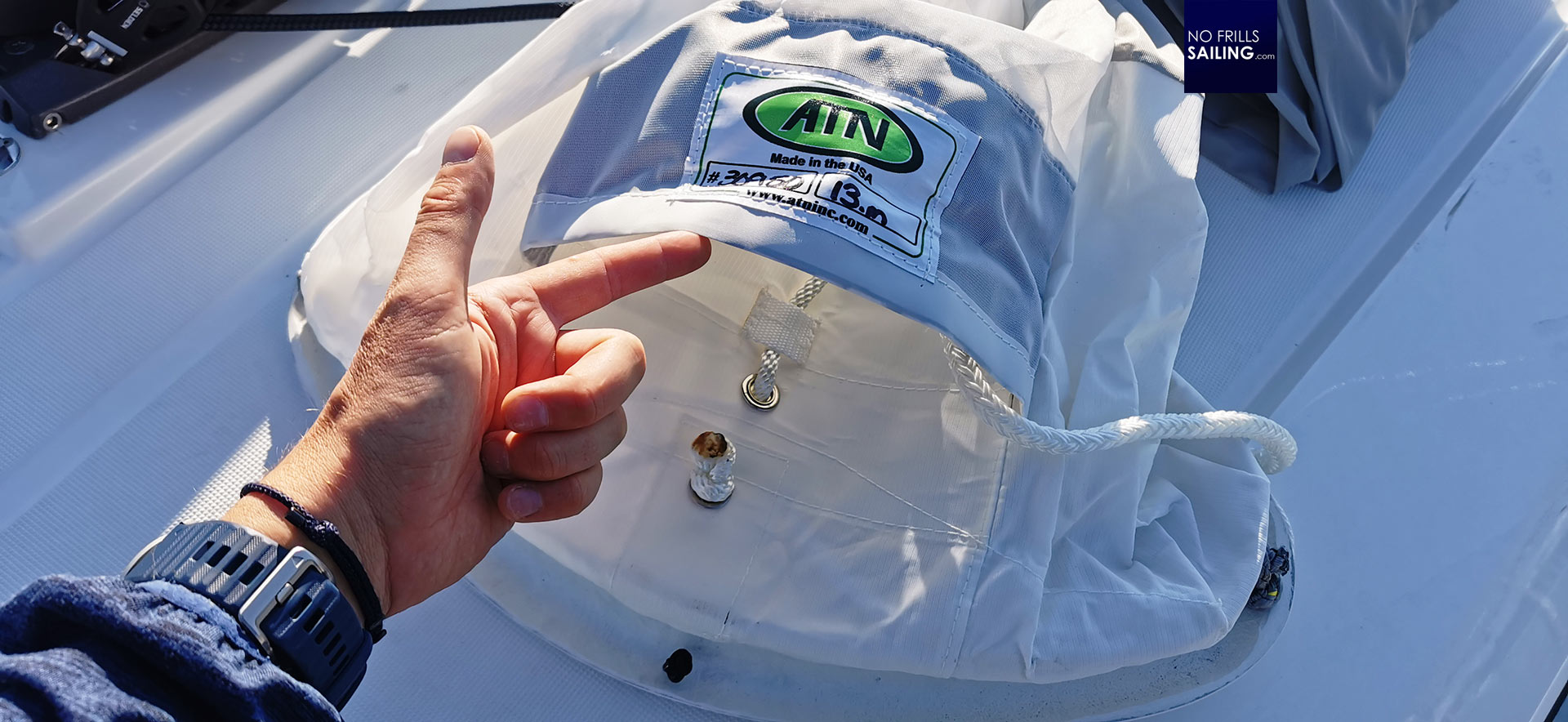
Basically, like in these pictures, the sail is brought up to the top of the mast covered in a “sock”, the very sleeve. By pulling a separate halyard, the sock is pulled to the mast top as well and underneath the Gennaker will be blown to full bloom by the wind. Taking down is just easing the sheet a bit and pulling the sleeve-halyard in the opposite direction, having the sleeve covering the sail from bottom to top. Success always guaranteed!
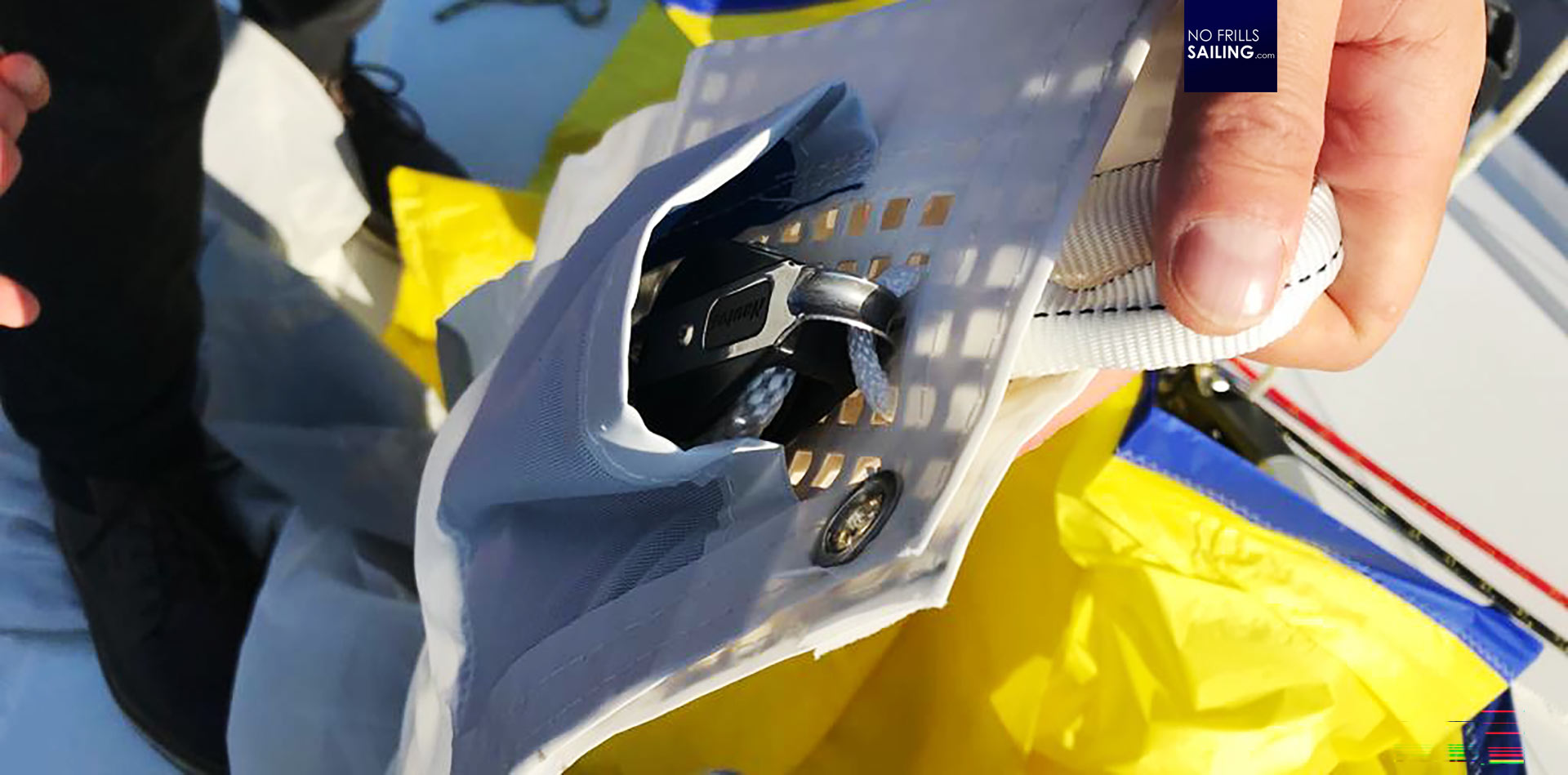
You know that I am a great fan of Quantum sails and here is why I also love their Gennakers: Not just the sail itself is made by specialists and is of high quality, the sleeves are as well. The very socket for example is by ATN, an American supplier. There is no cheap spray cast plastic socket but GRP-hand laminated. This is very rigid, won´t splinter or break when banging against the mast. The sleeve has a separate channel for the halyard so that it cannot get entangled with the sail. The halyard at the top is met by a rolling block, not just a cheap eye: This all adds up to a fire-and-forget product of high quality, longevity and – as I said – guaranteed success in sailing.
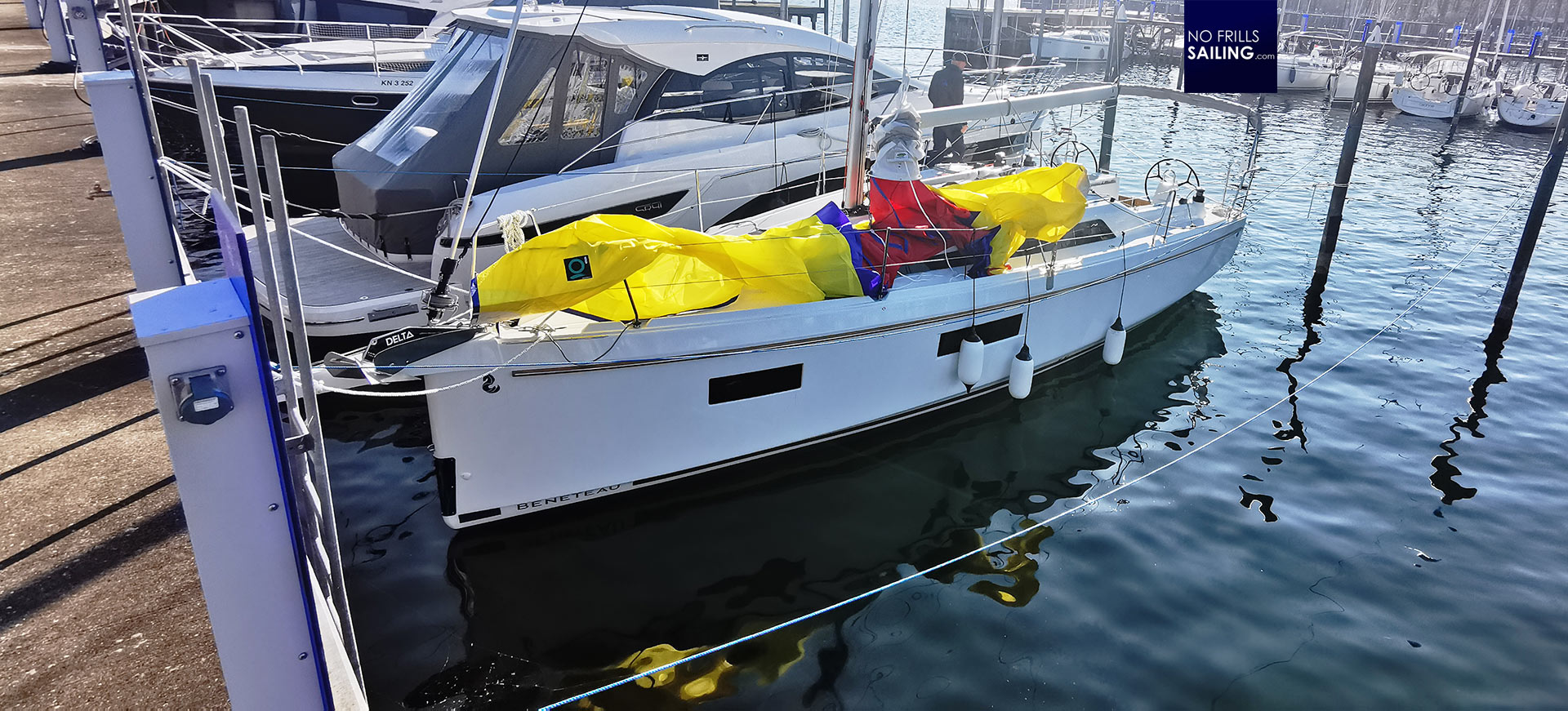
These large sails can be intimidating, but don´t get fooled. On the contrary: There is nothing more satisfying than hoisting these big shiny colorful sails and speed along whilst all the others have no power and wind, turning on their Diesels! When sailing, I always enjoyed shooting along under the Gennaker sail the most. So, let´s get it done – how to unpack and install it the first time.
Step by step first time setup tutorial
If your Gennaker – like this one – arrives not sailing ready, take 30 minutes time and follow this simple tutorial. At first, you will either go out on a quiet day with no more than 4 knots of wind or – if wind is coming in is from behind and there is no chance to get entangled in other riggs of your neighbours, you may also hoist it the first time while berthed in your marina. Fit the tack line to the bowsprit and one – leeward of course – sheet. Have it ready.

Take out the sleeve, unroll it on the deck. Take the large plastic socket and put it on your shoulder while sticking your arm inside the sleeve. Shove it up. Just like an inseminator with a cow, you want to put all of the sleeve on your arm. Roll it up and stuff it, your arm will hurt but it´s worth it. You do it until you reach the top end.
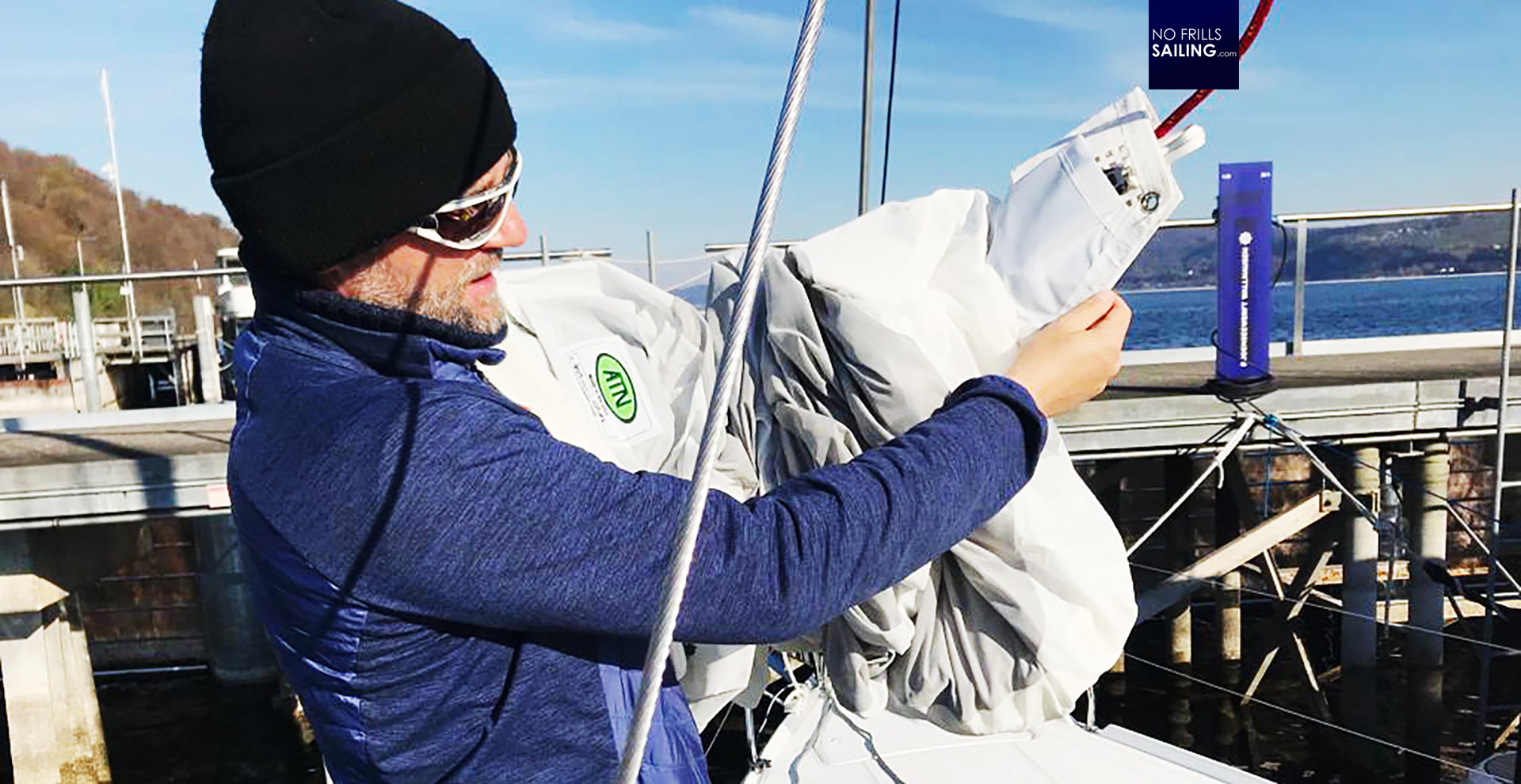
At the outside of the top end there is – in our case – a Velcro zipp which you want to open up. In this picture you see a blue soft shackle. Your supplier or brand may use a steel shackle or something else. In any case: This is where you now connect the head clew of the very Gennaker sail. You might need a second helping hand or you may have unrolled the Gennaker-garment and have put the head clew in your reach.
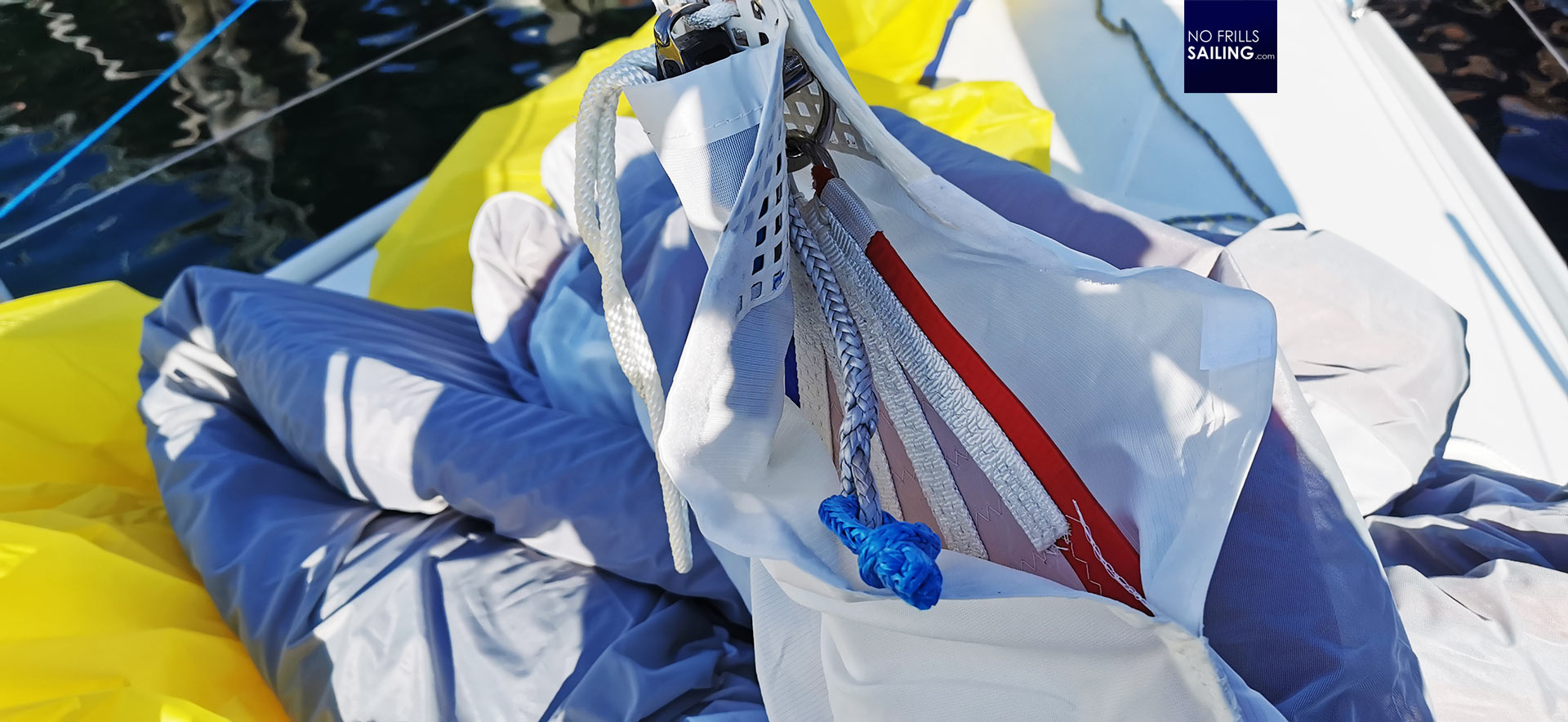
If this is done, take out your arm and lay down the Gennaker. Now you search for the “clew” named end of the sail and connect the sheet, put a knot on the tackline around the “tack” clew end of the sail. Finally, connect the Gennaker halyard to the soft eye of the sleeve – not the Gennaker´s head! Make sure that the sail can go up to leeward without harming itself in your shrouds or neighbouring boats.
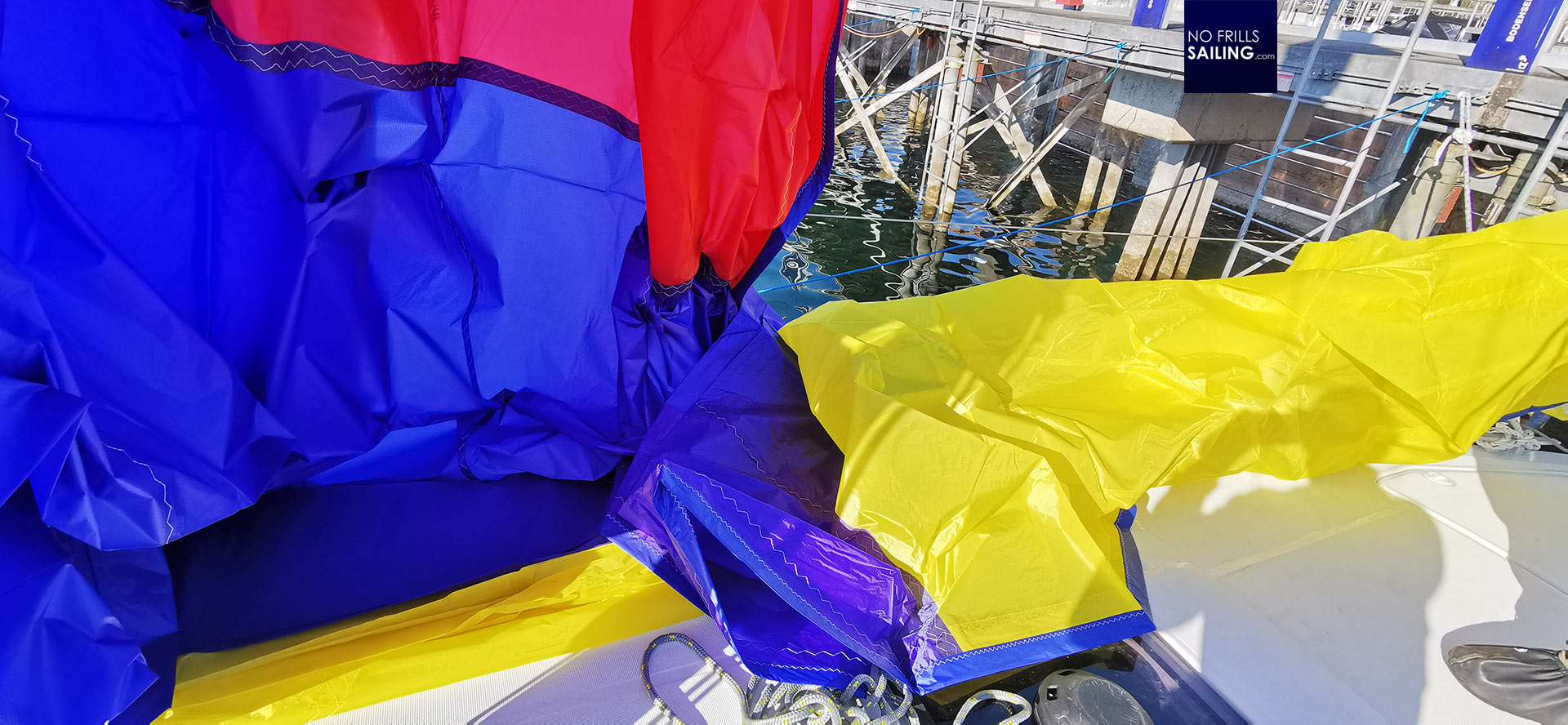
Well, that´s it basically. I never take in the tack line too much right onto the bow sprit as well as the sheet. We do not want to sail the Gennaker but rather bring it up safely and check the whole sail for production quality. Later, when sailing, the tack clew must be much closer to the tack-block of course. Also, I let loose the sheet – as I said, we just want to hoist the sail, we don´t want to actually sail it.
Getting up your Gennaker for the first time
If done as I described here, depending on the size of your boat, this whole process takes no more time than 15 to 30 minutes. You can do it alone if you work step by step and be prepared nicely, a second hand to grab and hold is advised. If you have everything connected the right way and made sure that you won´t hoist the sail into somebody´s rigging, go to the cockpit behind the winch, grab the halyard and pull.

The sail will go up. I recommend pulling hard to get it up and inflated quickly. If you pull too slow it might get stuck in your rigging. Like to be seen on this picture, the sail will be inflated to full bloom the first time as the sleeve will stay up. Make sure that the sock-halyard, which is in fact a loop, is either connected to the rail of your boat or the second man holds it. If there is nobody securing the halyard and wind blows, it will be some trouble to get it back onboard.
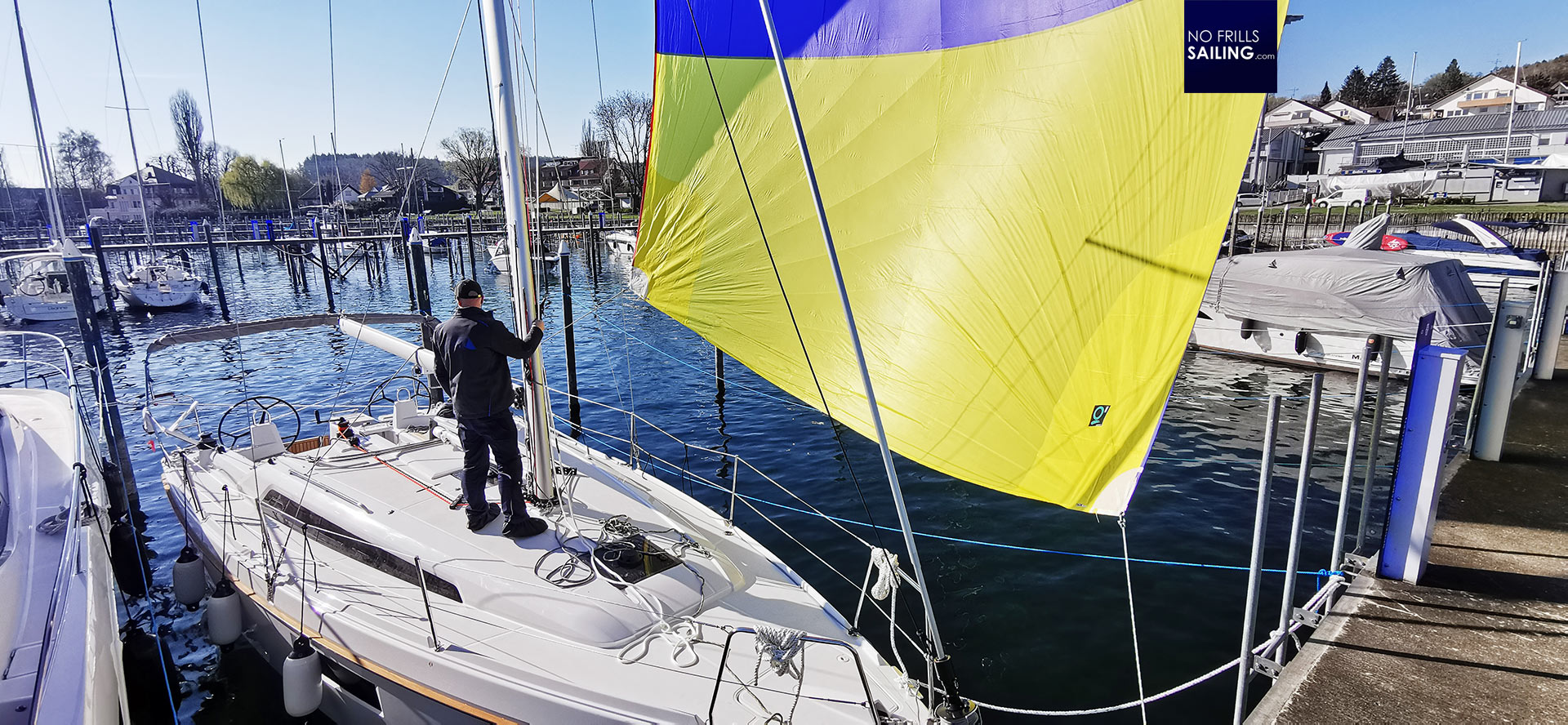
You will now see your brand new sail in its full beauty. What a graceful sight, isn´t it? For me it is always such a special moment when sails are up, but this moment´s value is boosted when this sail is a Gennaker. The sun will make the Nylon reflect and break her light, it´s an eyecatcher and head-turner. There is no way to elude yourself from this beauty.
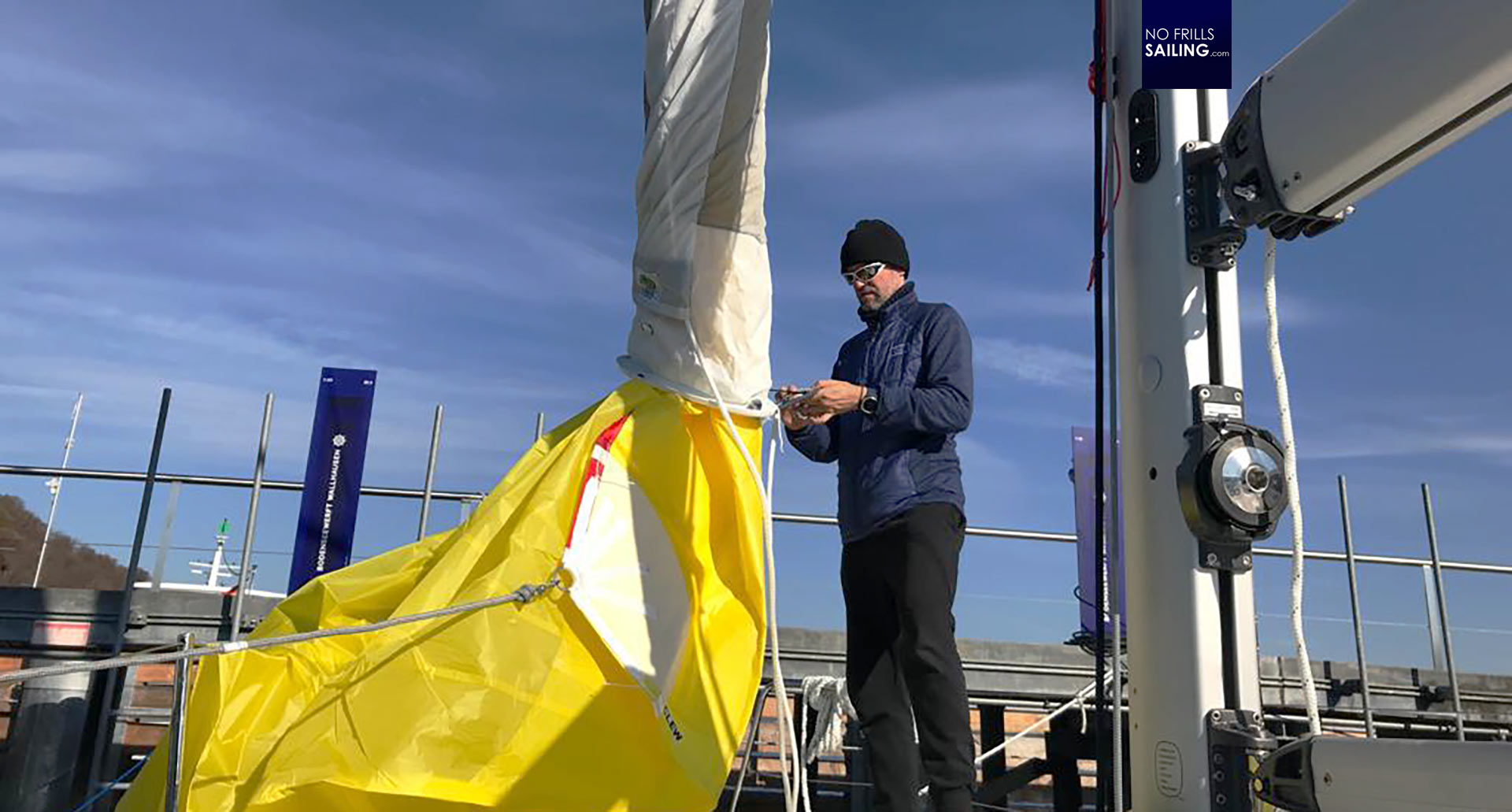
Now, check the sail itself from windward and leeward side (this is the advantage when you test it in the marina) for any flaws: Production errors, fissures, open seams or holes (this is even more valid for used sails). If everything is okay, test the sleeve in taking it down. This is also very easy: Ease the sheet and pull the halyard of the sock down. The sleeve will enwind the sail gracefully from bottom to top – in the end, when the plastic socket is down back on deck and in your hand, a big white/grey sausage will hang from the top.
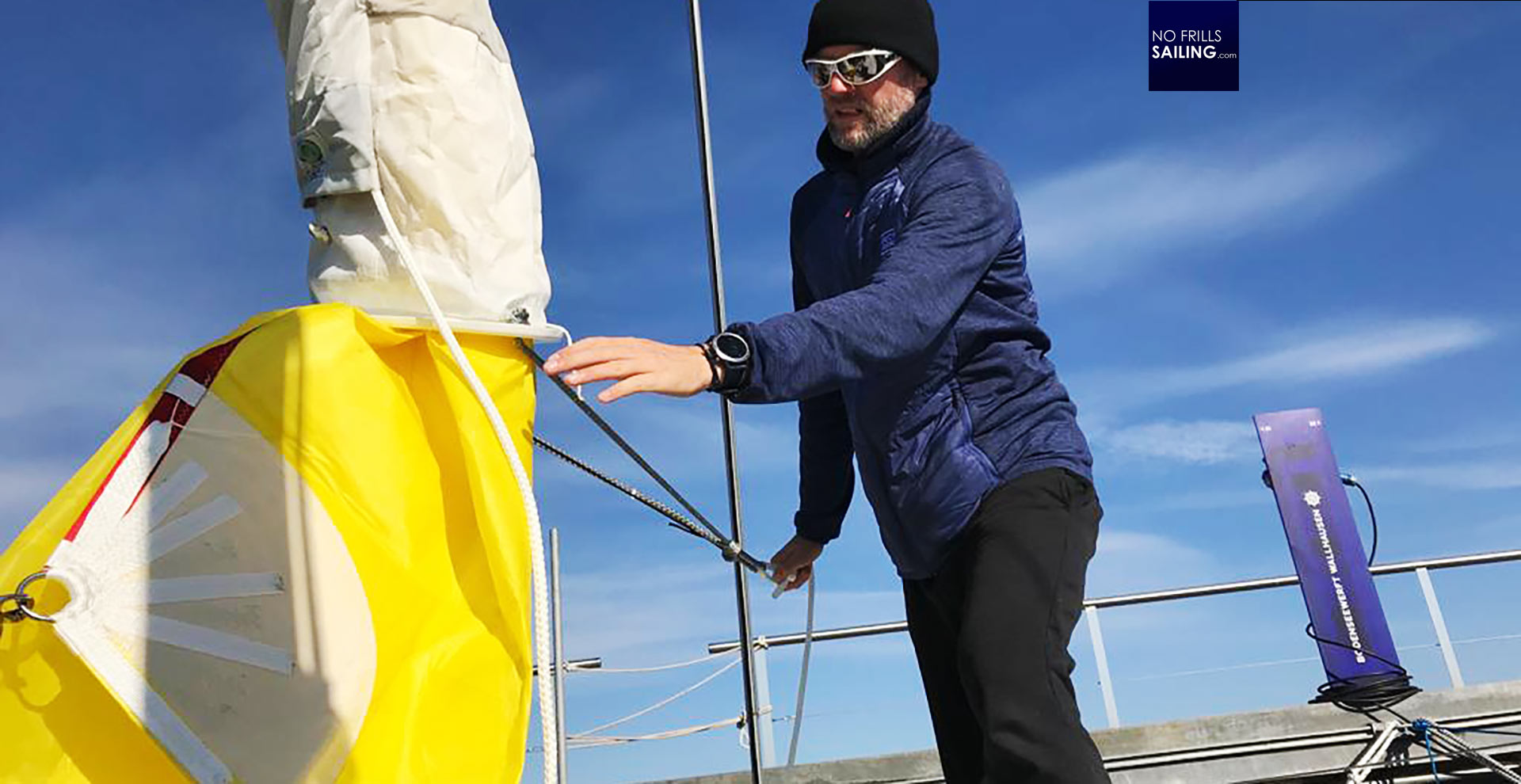
You may hoist the sleeve again and take it down one or two or even three times just to test that it works fine and safely. Get accustomed to the handling of your new sail. And be bold: This is how you do it when outside and sailing: Connect the Gennaker-sleeve´s head eye to the Gennaker halyard, the clew to (both!) sheets which are also both running around the outside of the shrouds and finally the tackline to the tack clew. Hoist the “sausage”.
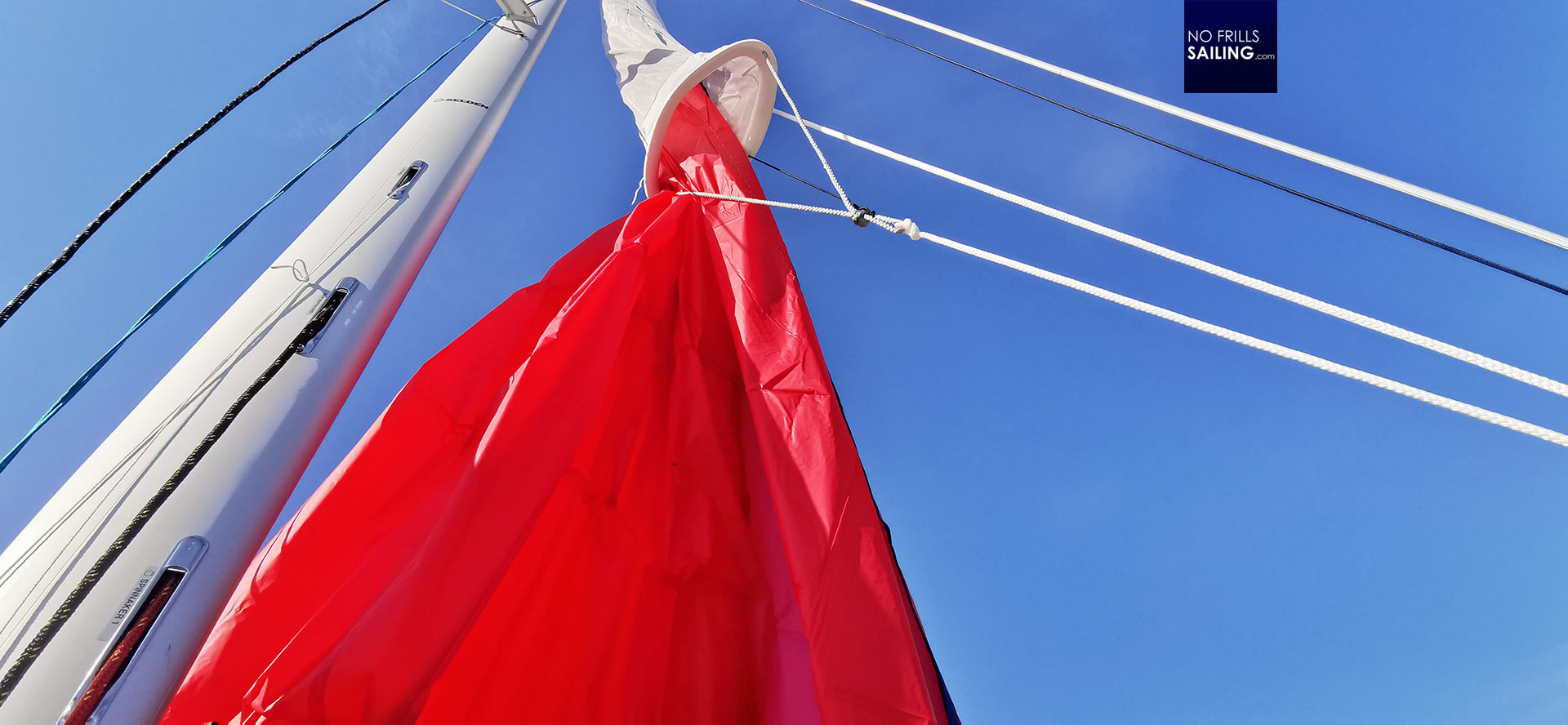
Now take in the Genoa or Jib and pull the sleeve halyard to get up the sock and free the sail. You will see that this works even on big boats just as fine. If your boat has an autopilot you can do it single handed without any stress. Even getting it down when the breeze gets stronger and you don´t feel comfortable anymore is as easy as ABC: You bear away to almost downwind sailing, take the sheet in your hand, go to the fore deck, grab the sleeve-halyard and pull it, at the same time ease the sheet.
Gennaker sailing as easy as ABC
Sailing your Gennaker with a sleeve makes light wind sailing – even in stronger winds – so much easier and safer than “out of the bag” (although this is also fun, as you may read in my first Gennaker tutorial). There is no excuse anymore not to acquire a Gennaker for your own boat anymore because you can forget all the bad stories about those sails which originate back to the times of classy Spinnaker sailing.

For our Oceanis 34.1 this three-color Quantum Gennaker with ATN-sock worked just perfect. We couldn´t hand over the boat for some other reasons at this occasion and as such couldn´t fly these shiny colors for real, but we will do it in the coming weeks and train our owner and customer not just how to handle his brand-new boat but how to sail fast and safe with this big, beautiful sail.

In this, I took down the “sausage” and had it folded in zig-zag-style right into the big sails bag and stored it away down below decks for the big day of handover. For you guys thinking whether or not to go for a Gennaker – do it! It is easy, it is fun and it is safe. Don´t buy the cheapest garment and invest in a good sleeve, possibly ATN, for a guaranteed 100 percent success rate in bringing your big sail up and down.
You might as well be interested in these related articles:
First time setup of a Code 0 sail
Sailing the Code 0 for the first time
Gennaker retrieval tutorial single-handed (without sleeve)
